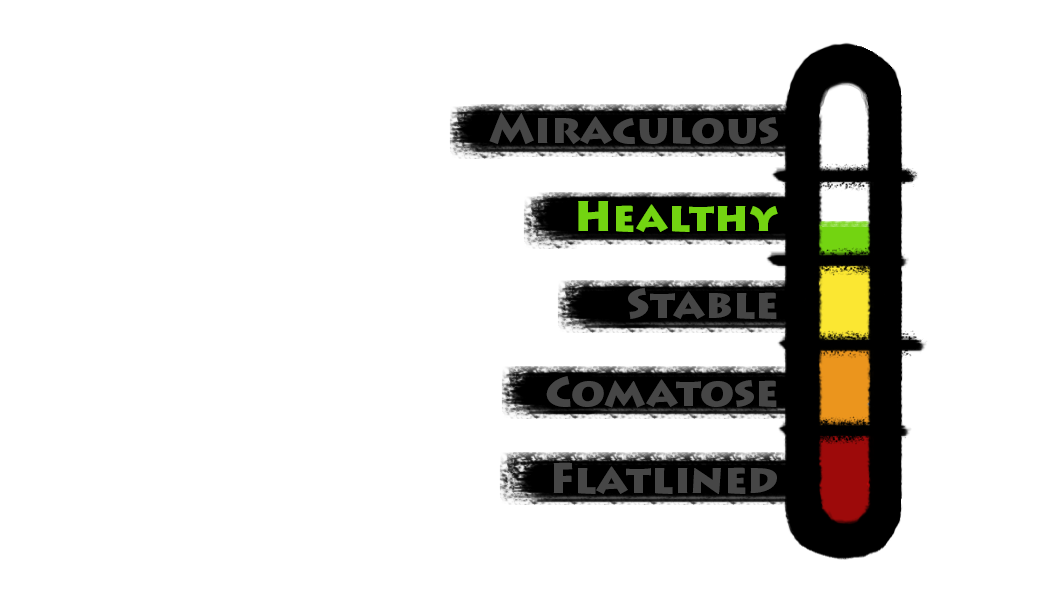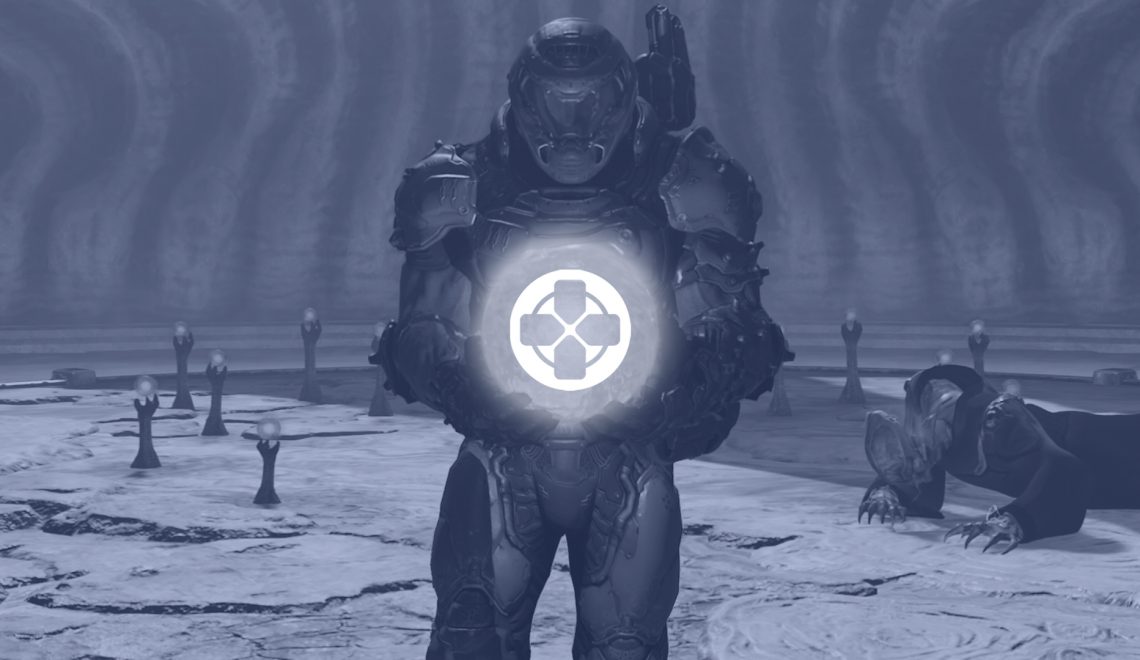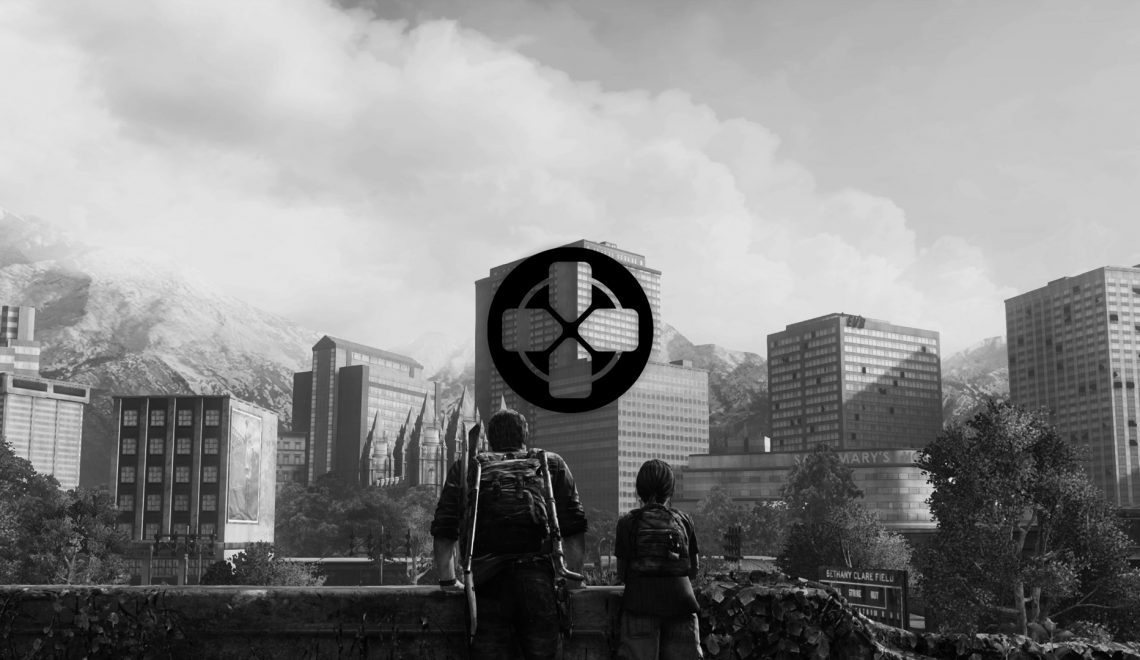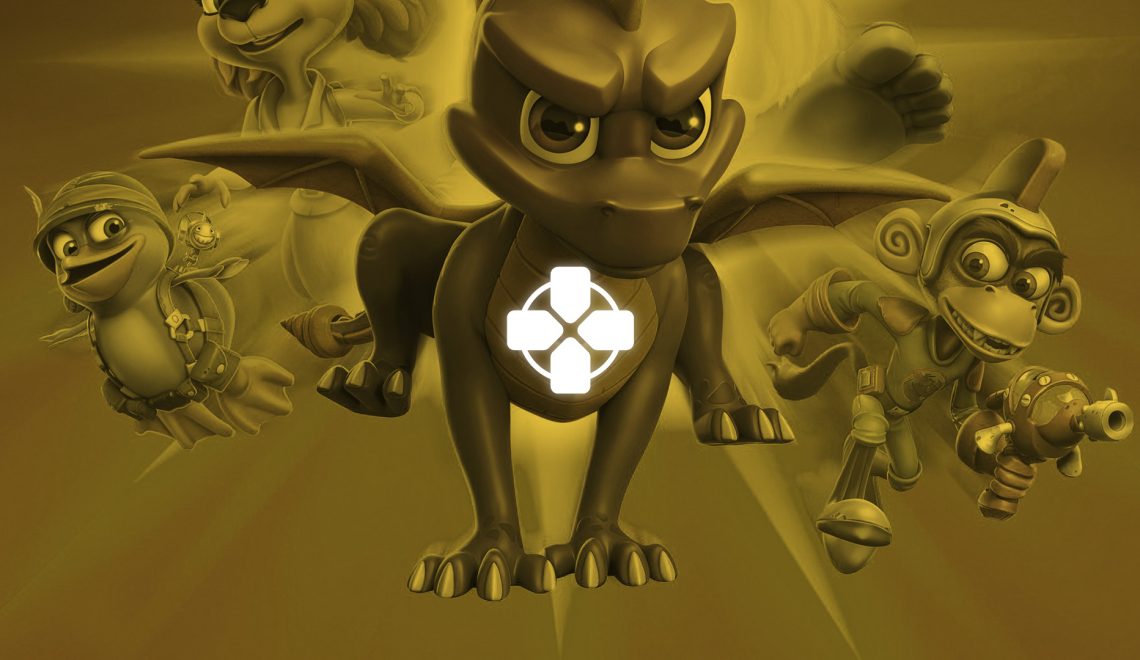Video games that become cult hits are called that for a reason. They may aim for a narrow audience or be riddled with flaws that can’t be ignored, but they’re saved by excelling in certain areas with innovative, eccentric ideas that rare few games can boast. Deadly Premonition, Catherine, American McGee’s Alice, EarthBound, and even Demon’s Souls are differing examples, with some exhibiting major issues or very little and others being remembered for their unique stories or bizarre yet memorable game design. A prime cult hit is Mirror’s Edge. Having recently gone back and played it again as a refresher, I can see why it stood out nine years ago with its bold first-person platformer gameplay, absolutely electric music, and strikingly modern, colorful environments. However, its problems are still as clear as day with awkward, bland combat, sometimes confusing level design, navigation that loses its speed and flow too often, and a straightforward story that left more to be desired.
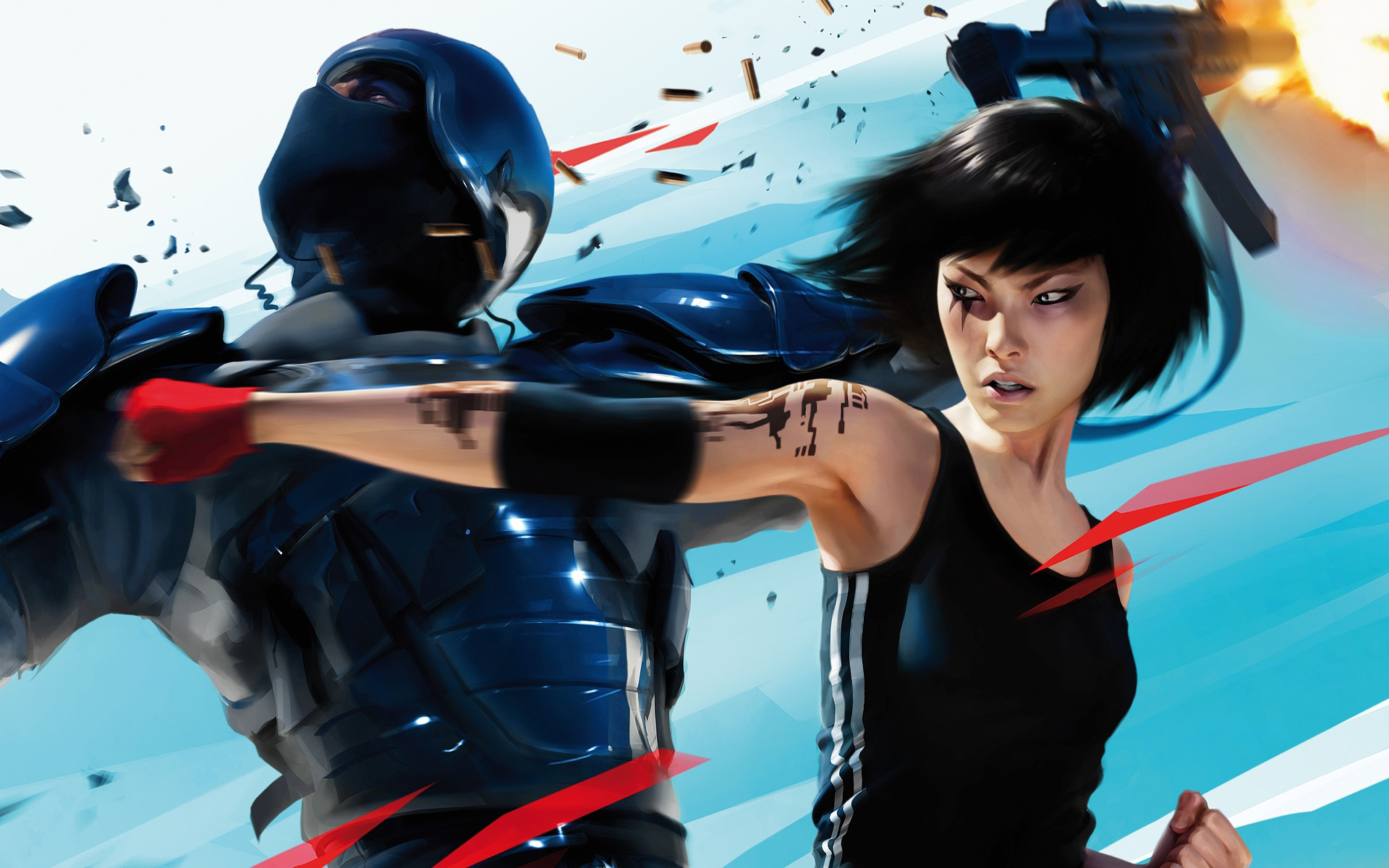
It’s needless to say that Mirror’s Edge’s eye-catching concept art and Faith’s character design resonated with a lot of players.
After I had first played it, I couldn’t help but wish that Mirror’s Edge would eventually receive the same treatment as Assassin’s Creed did with its sequel. Both games had massive amounts of potential, and if Ubisoft Montreal could harness that with Assassin’s Creed II, I was sure DICE could do the same with a follow-up to Mirror’s Edge. I gave up hope that this would come to light, but a reboot of the franchise was announced during E3 2013, and in the three years since that revelation, I followed its development closely and was continually impressed by the intense love and attention it got. But does Mirror’s Edge Catalyst actually have a refined edge that cuts deeper than its predecessor to show for, or is this negated by dulling and chipping in its build that sully its sharpness?
Two Leaps Forward, One Leap Back
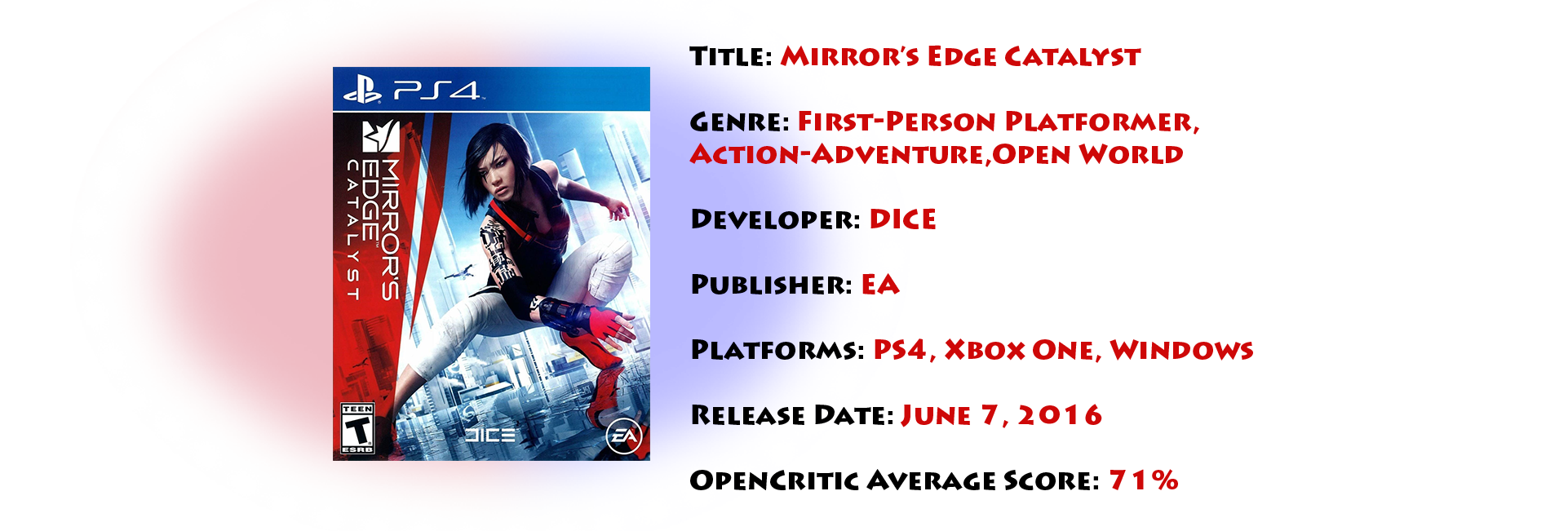
YouTube Version of the Review at the End
If there’s one thing I forgot about the original game, it’s how slow and clunky it can feel with its parkour. Once you get to top running speed, it’s a rush, but any kind of vaulting or rolling completely derails this speed, bringing you to what feels like a crawl as a so-called “Runner.” It felt fast for its time, but Catalyst truly ups the tempo to provide consistent, quick gameplay. A lot of the core tricks up Faith’s sleeve are intact, such as being able to wall run, slide, and jump to do all of your essential traversal like climbing up pipes, walking across beams, performing reversal jumps after scaling a wall, etc. You’ll feel at home playing this if you recall the original, but there are a couple new mechanics that fold into its gameplay loop. Shift allows you to dodge forward, backward, left, or right if you press R2 while indicating your desired direction with L3, and if you press it while already moving forward, it brings you back to top speed after executing a skill roll or fudging up your flow. Even the “MAG Rope” is a welcome addition, which allows Faith to swing across impossible chasms between districts and buildings, pull herself up faster to higher elevations, or pull down scaffolding that blocks her way. It’s exhilarating when it comes into play during any run and doesn’t ruin but rather complements parkour’s thrill.
The biggest and most joyous changes to the gameplay aren’t anything new, but simply iterative. Catalyst feels twice as fast and smooth to play as its predecessor, with quicker animations and more responsive controls that rarely get in your way of enjoying the freedom of flight. Granted, there are unclear nuances and quibbles to movement that destroyed my fun during time trials or a getaway mission, but by and large, Faith’s gymnastics have only aged with grace since we last saw her, and it helps that the level design is better this time around, promoting speed and a growing proficiency with the controls as you move onward. With semi-linear campaign levels and an open world to explore, there’s a great diversity of obstacles to scale and routes to take that allows for more freedom of choice with how you want to run around with some side missions and side objectives, but this comes with some caveats that I’ll mention below. Other than that, you can improve Faith’s skill set by collecting items and completing any sort of mission to level up. Some old stuff (like skill roll and coil) and new abilities (such as increased armor and Disrupt, which temporarily immobilizes enemies) are locked behind this system, but fear not. Most of the necessities for movement can be obtained near the beginning, but I would’ve preferred if there had been much more moves or combos to unlock for combat, which brings me to my conflicted thoughts on the fights between flight.
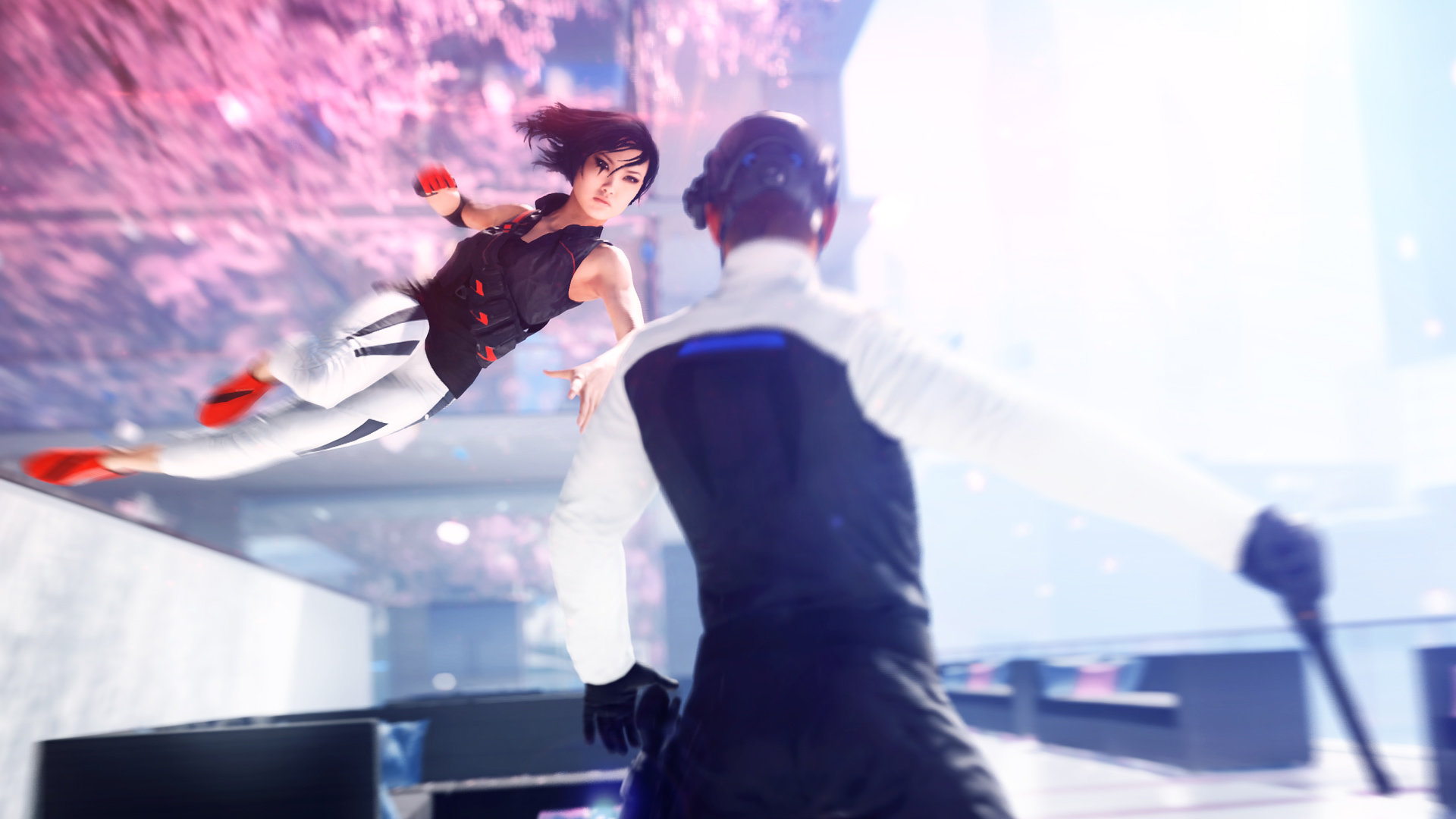
After building up lots of momentum, Faith can completely fill up her Focus Meter to enter a “Flow” state, which allows her to seamlessly rush through enemies while running by using light or heavy attacks. This means that, for example, if you’ve activated this and drop on an enemy with a heavy attack, you’ll immediately incapacitate them for a moment and rush past them without missing a beat.
You only had three ways to take out enemies in the original game, and it forced you into these scenarios more often than it should have. You could only disarm them or initiate a high or low attack while remaining stationary or in motion. It was a bafflingly simple approach to combat that felt more like a nuisance. Catalyst appropriately complicates this gameplay in a lot of reasonable ways, but makes some missteps that fail to shake away all that awkwardness. The positives are that combat is far more inviting this time, encouraging you to use either heavy or light attacks in conjunction with shift to dodge, punch, and kick your way to knocking out foes. You can even send some foes careening into others or objects by directing your heavy attacks’ directions, which is a nuanced, clever way to have players analyze their surroundings. Instead of all enemy types practically being the same with lethal guns, there’s only one enemy type with a machine gun, whereas the rest have differing approaches to close quarters combat this time designed to subdue. This means that groups of foes will have you taking them on uniquely, and watching Faith’s flurry of hard hits unfold is stunning while picking off enemies one-by-one.
However, your involvement in these sequences is limited. I was immensely confused when I found a new move in the leveling system that allows you to pull an enemy toward you to turn them around, but where were other moves like this? There’s no evolution or expansion to your fighting repertoire, and this makes combat – like the first game – a repetitious exercise that’s neither challenging nor fun. This is especially frustrating when encountering Protectors and Sentinels. They can quickly ruin any flow you have during combat by pushing you away or entirely negating most attacks you perform, respectively. Special combinations of moves that bring out armor weaknesses, being able to block attacks and counter them in numerous ways, using the environment more to your advantage: these are ways in which Catalyst could have made combat worth pursuing, but all we have here are frustratingly half-baked ideas that hardly realize the vast potential this franchise has always had to enliven its hand-to-hand action.
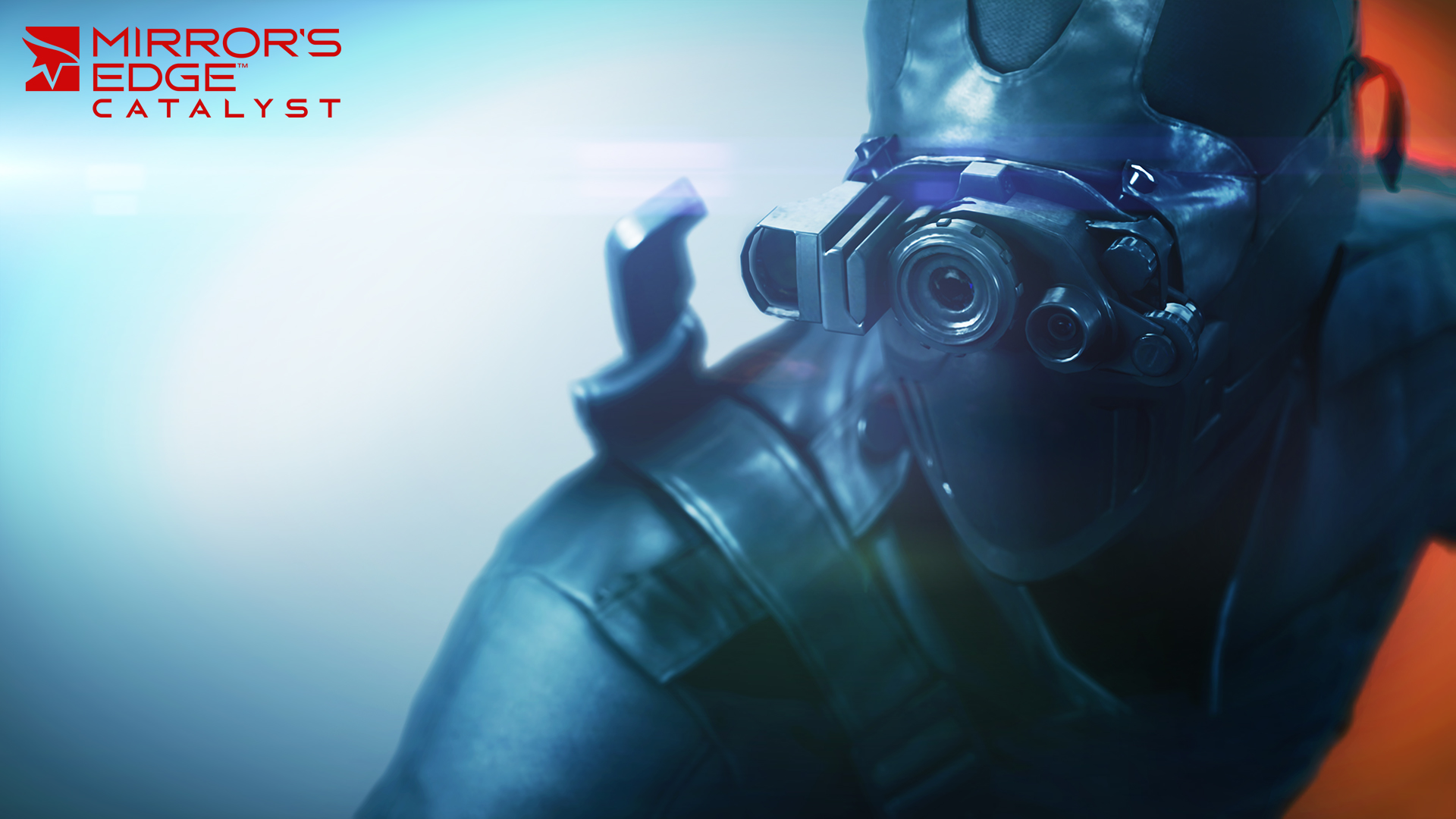
This guy looks sick, but he dies in one of the first missions at someone else’s hand. His ilk are never seen again throughout the game. Can you imagine someone like this being a boss where you have to chase and fight him a couple times until you win by defending, countering, and attacking your way to subdue him? Ugh…it sounds so cool, but there’s nothing like this in the game.
The same goes for the level design. I did say how it does make way for better flowing parkour and more open-ended ways to get to your destinations, but this isn’t true half of the time. Runner’s Vision discourages this natural inclination you’ll have to instead follow a line to destinations, and in most cases, you have no choice but to do this because of how the open world connects city districts. The MAG Rope may allow you to eventually cross previously inaccessible routes to other areas, but following your instincts usually results in dead ends. You’ll be free roaming your way to a side mission only to find that you have to go back and around an area to go across a single spot that leads to your destination. It’s an open world that doesn’t take advantage of allowing players to familiarize with or invest themselves in it since most campaign missions take place in areas you only visit once, but this is a whole other topic. Mark Brown does a far better job explaining the errors in Catalyst’s open world design (which goes for a lot of modern games in general), so I encourage you to listen to his criticism as it aligns with my own.
Riddled throughout the world are all sorts of things to do, but there’s an equal mix of compelling and arbitrary tasks to complete. Dashes were my favorite side missions, which require players to find the fastest path to an end point. They’re just time trials, and since you need to actively ignore Runner’s Vision to find the best route, I loved going against the grain here and wish the game did this on a grand scale. You can also create your own and play others’ Dashes, and while I rarely did either, it’s a lovely addition that makes perfect sense in an open word. Delivery Missions, Security Hubs, and Diversion Missions are decent challenges as well with some minimal world building thrown in, but I desperately wish these and all the collectables were more rewarding by expounding on the side characters’ history or the city’s lore. You have to give reasons to explore an open world; you can’t just fill it with fluff and expect players to care about it. Since this civilization is occupied by bland NPCs, little environmental storytelling, and some repetitious or pointless side content, you won’t want to explore its nooks and crannies over time. It does clock in at a great length, taking around 15 hours if you do some of the optional stuff, but there’s no need for an extended stay in the city of Glass.
There was nothing particularly wrong with the original game’s story. Faith has to figure out who’s trying to frame her sister, Kate, with the death of Robert Pope, who was running for mayor on a platform that corrupt officials disliked. It’s a self-contained murder mystery that has some decent twists and revelations, but when it comes to understanding the world around you and characters’ relationships and histories, the game’s unconcerned with these points, and that meant you couldn’t really invest in what was going on. I would have liked to had seen where it would go since it was fine, but Catalyst opts to reboot the universe and reincorporate elements and events into a re-imagined story, which is impressive in itself. The game scrounges up a couple characters that are worth paying attention to and expounds on more lore about the city of Glass and its socioeconomic climate by doing this. Unfortunately, bad and uneven character development, predictable plot points, and generic themes sell this tale short. The worst aspect of the game is how so many characters practically disappear as the story moves on. Nomad? Birdman? Dogen? I would’ve loved much more time spent on these characters with more side missions and in the main campaign, but the story gets carried away with itself and leaves possibly interesting characters and side plots in the dust.
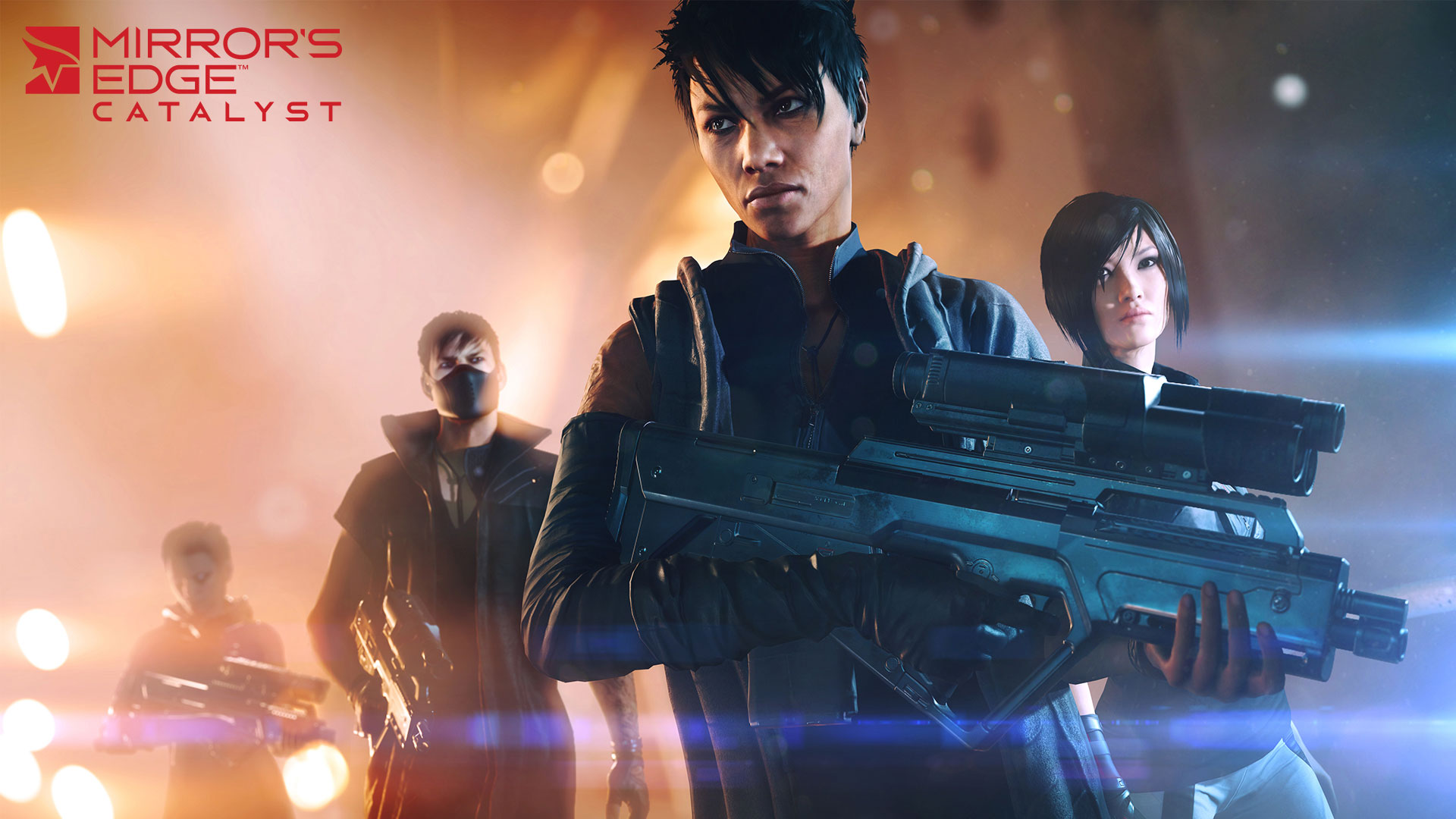
Faith is forced to work with the extremist group Black November near the end of the game, and I really liked the amount of time invested in fleshing out the basic beliefs and traits of its leader: Rebecca Thane. I wish the other half of the cast had gotten treatments as decent as her short arc.
Oh, what’s it about? Faith gets out of prison after two years and stirs up trouble with the authorities. She goes for a Run and ends up stealing valuable KrugerSec data that unveils a sinister plot for the conglomerate to further control the citizens of Glass, who already live under a totalitarian, fascist capitalist government. This sets Faith on a journey to shut down KrugerSec’s dangerous goals, and she’s in for some surprises and complications along the way that will shake her resolve. There are points of dialogue every now and then that managed to impress me, but we’ve all seen this kind of story before. Even Faith’s backstory (which is told through flashbacks) seems cool, but it’s not handled that well to impact current events, which could have added genuine mystery and intrigue to the story. It poses itself as something emotional and important, but when the flashbacks end, there’s little indication that Faith is haunted by her past due to her closed-off personality. She’s oddly monotone, abrasive, and stubborn. I expected someone more playful and personable, but Faith isn’t that interesting of a person despite her background and how awesome she looks. So yeah, the story isn’t awful, but it certainly isn’t great. It may make some improvements over the original game, but they’re incremental compared to what could have been done with all the good material available to work with this time.
The game looks so good from an aesthetical standpoint. The first game may have stood out with its powerful use of color, but the reboot takes its design concepts and cranks them up to 11. The differing districts’ towers, rooftops, and apartments are sleek and post-modern with art direction that captivates, which even shows in the striking costume design. The world is too barren as a whole and vapid from a gameplay perspective, but it sure is pretty to look at! It’s a good thing that it runs in 60 frames-per-second on the PS4, though this does come with some ugly compromises. There are pop-ins, poor textures for NPCs and various objects, and bland backdrops. However, I can’t think of any good excuses for why this is since the engine seems hardly pushed compared to the likes of Star Wars Battlefront or Battlefield 4. Disregarding performance issues and visual hiccups, the graphics are leaps and bounds above its predecessor, and you’ll be absolutely amazed by some of the settings you’ll come across like in The View and Anchor districts.
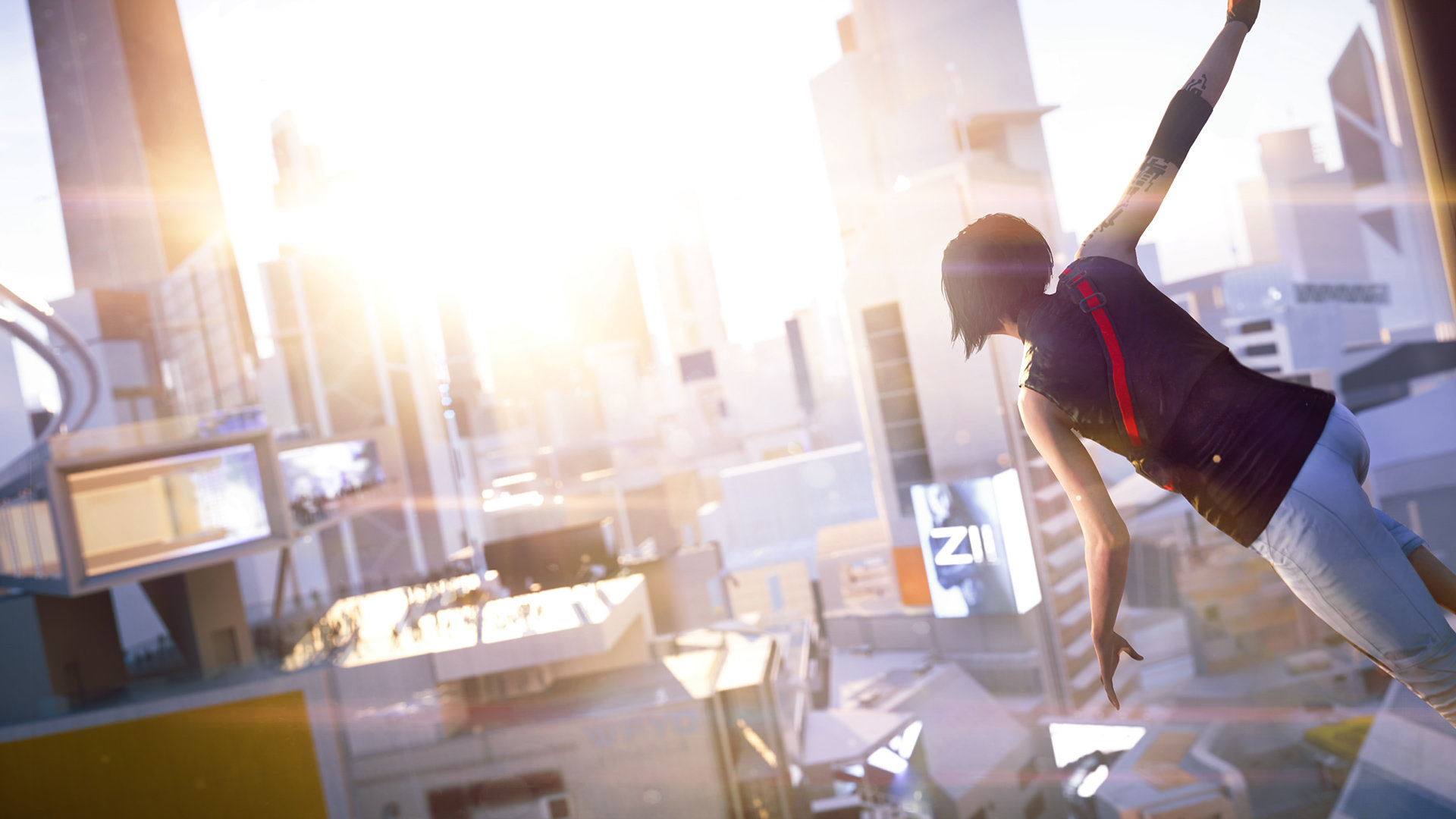
I swear on me mum that I’d pack my bags and move to Glass in a heartbeat. Sacrificing most of my freedoms under a regime of private corporations? Worth it.
The voice acting is nothing to write home about, but the sound effects are pristine. Faith’s shoes will squeak in all sorts of ways depending on your actions, and the sound of kicks cracking enemies’ glass-like armor or the city’s ambient noise reveal an attention to detail with the sound effects that especially makes gameplay all the more immersive when you’re swept away into the groove of running or even combat on rare occasions. Oh, and the soundtrack by Solar Fields? You’ll be insanely thankful that his music graces this franchise once more, because there’s no one that can quite replicate his signature trance electronic style. I adore his atmospheric tracks that play in the background when free roaming, and his high tempo songs are perfect for missions where you’re pressed for time. If there’s one area of Catalyst that you can count on, it’s the overall sound department, but how about the game as a whole?
Conclusion
Every time I think about Mirror’s Edge, I honestly get chills. I can’t help but consider the sheer power its gameplay, world, and characters could unleash in the right hands. I want this franchise to excel, but just as the first game struggled to get off the ground, Catalyst struggles to soar as well. The core gameplay and artistic direction have vastly improved for this entry, and while it explores new territory with an open world and a grander narrative that act as solid foundations, they’re squandered since little is built atop them to make this game tower above its peers. Despite these letdowns, DICE now has an even better framework to construct a phenomenal sequel, and I earnestly hope it will seize and run after this opportunity. I have faith in Faith’s future, but her time to shine hasn’t been struck just yet.
